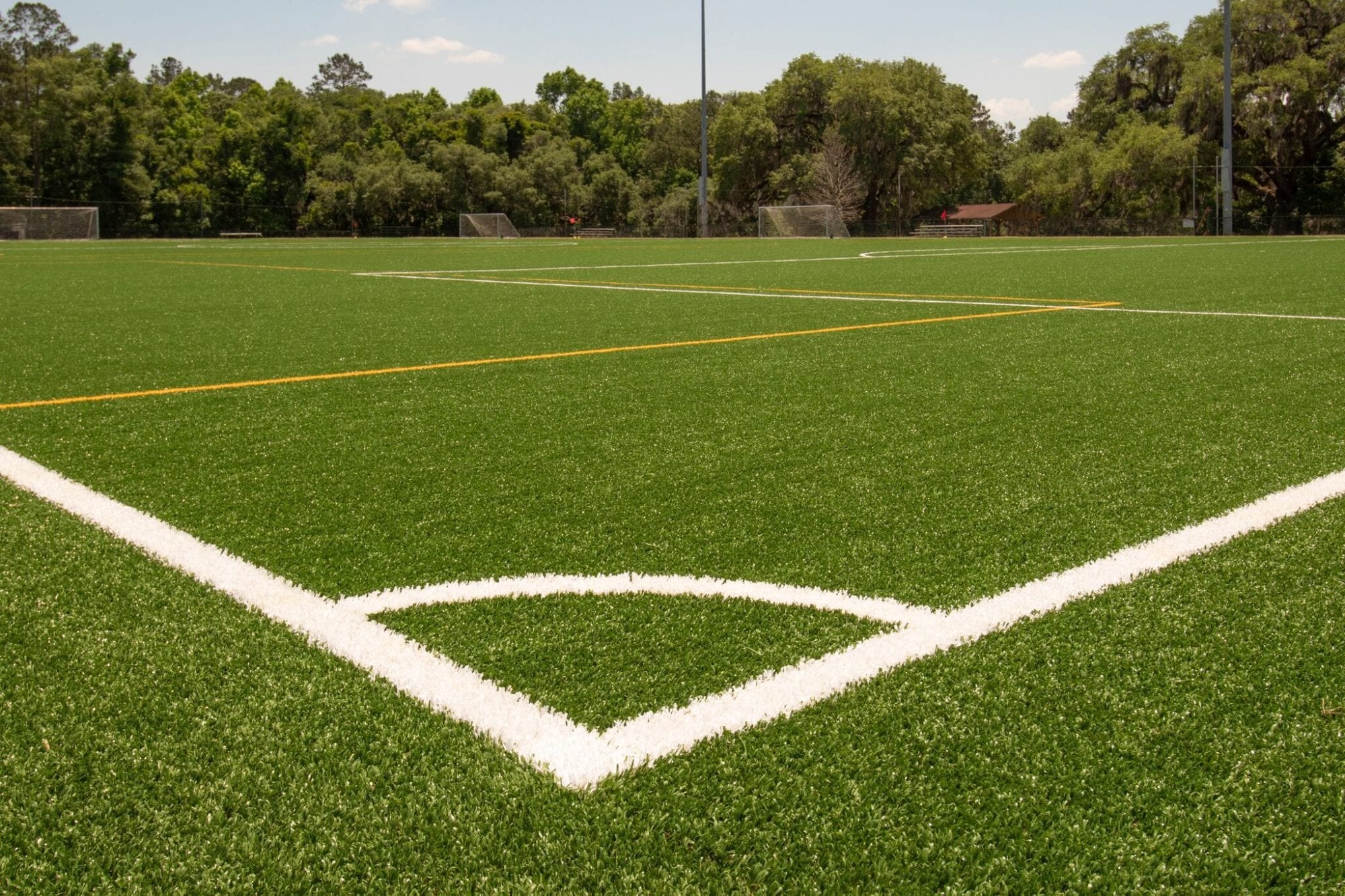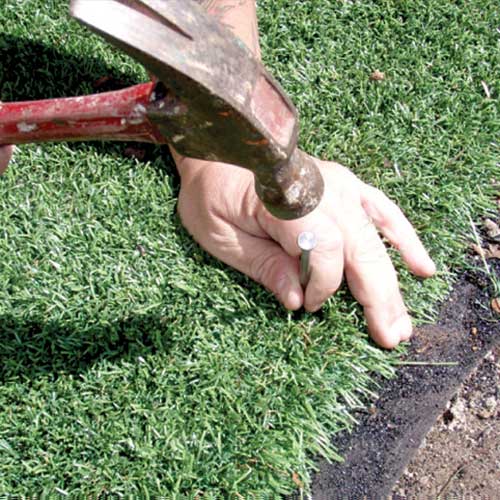Top Phoenix Turf Companies Offering Superior Synthetic Grass Options
Wiki Article
Explore the Environmental Conveniences of Opting for Artificial Turf Solutions
The adoption of synthetic grass services presents a compelling possibility to resolve pushing environmental challenges. By significantly decreasing water usage and minimizing the application of hazardous chemicals, these choices not only promote sustainable landscaping but additionally secure neighborhood ecological communities. The reduced carbon impact linked with decreased upkeep tasks adds to an extra sustainable technique to land administration. The effects of these benefits extend past plain preservation efforts, raising inquiries about their long-lasting effect on environment preservation and overall ecological balance. Checking out these measurements exposes an intricate interplay worth taking into consideration.Water Preservation Perks
Among the most substantial benefits of man-made grass is its capability to preserve water. Standard lawn lawns call for significant irrigation, particularly in locations susceptible to dry spell or water limitations. In comparison, synthetic lawn does not require watering, significantly lowering the general demand for water resources. This attribute is particularly advantageous in arid areas where water deficiency is a pressing issue.By eliminating the demand for routine watering, synthetic turf adds to sustainable landscape techniques and assists alleviate the environmental impact of excessive water intake. Moreover, the preservation of water reaches the reduction of runoff, which can cause soil erosion and river pollution.
Additionally, the installation of artificial grass permits house owners and towns to assign water sources extra successfully, concentrating on necessary usages such as alcohol consumption water and farming. The change towards synthetic turf not just advertises liable water use yet also straightens with broader environmental objectives aimed at protecting natural resources.
As neighborhoods significantly focus on sustainability, the water preservation advantages of synthetic grass provide an engaging case for its fostering in business and domestic landscaping jobs.
Minimized Chemical Usage
The change to artificial turf significantly decreases the reliance on chemical treatments commonly made use of in natural lawn upkeep. Standard turf management normally involves the application of plant foods, pesticides, and herbicides to advertise growth and control parasites. These chemicals can posture threats to human health, local wildlife, and the setting, adding to soil and water contamination.In contrast, synthetic grass removes the need for these dangerous compounds. As soon as set up, it needs marginal upkeep, mostly consisting of regular cleaning and seldom infill replenishment. This reduction in chemical usage not just profits the instant environment however additionally adds to wider ecological security. By lessening the launch of synthetic substances into the ecosystem, synthetic grass advertises much healthier dirt and water systems.
Moreover, the lack of chemical overflow related to man-made lawn installments helps safeguard regional rivers from air pollution, sustaining water life and maintaining biodiversity. Arizona artificial turf. As communities progressively prioritize lasting methods, choosing for fabricated grass presents a practical service that aligns with ecological conservation objectives. Via this change, homeowner can appreciate lush green rooms without compromising ecological health, leading the way for a much more lasting future
Reduced Carbon Footprint

Additionally, the installation of synthetic grass can lead to substantial water conservation. Natural lawns call for considerable amounts of water for watering, which not only includes in the carbon impact connected with water removal and therapy however additionally pressures neighborhood water sources. In contrast, artificial lawn requires minimal upkeep, requiring no watering, thereby dramatically minimizing water usage and its linked power costs.
Additionally, the durability of synthetic lawn adds to its reduced carbon influence. With a life-span of as much as 15 years or even more, the requirement for frequent replacements is reduced, leading to less waste and reduced power intake in manufacturing and dealing with traditional yard alternatives. Overall, man-made lawn offers a sustainable alternative for eco aware landscape design.
Environment Preservation
Environment conservation is a critical factor to consider in the discussion over landscaping choices, specifically when comparing man-made grass to all-natural lawn. Natural turf yards frequently require comprehensive maintenance, including the usage of herbicides, fertilizers, and pesticides, which can adversely impact neighborhood environments. These chemicals can seep right into the dirt and waterways, damaging native vegetation and animals and interrupting local environments.
Fabricated lawn gets rid of the need for harmful chemicals, therefore securing neighboring wildlife and preserving the stability of surrounding ecological communities. The setup of artificial lawn can lead to the conversion of previous lawn locations right into even more biodiverse landscapes, such as pollinator gardens or native plant locations, which can sustain neighborhood wild animals.
Inevitably, the shift to fabricated lawn not only preserves water and decreases upkeep initiatives yet additionally cultivates a much more unified partnership between human activities and the natural atmosphere, advertising environment preservation while doing so.
Long-Term Sustainability
Long-lasting sustainability is a vital consider assessing the benefits of synthetic grass over traditional turf lawns. Among the most significant advantages of synthetic grass is its sturdiness; it can last up to 15-20 years with very little upkeep, whereas all-natural grass needs regular reseeding and replacement. This long life decreases the demand for consistent sources, such as water, plant foods, and chemicals, which are vital for preserving a healthy grass yard.In addition, fabricated turf adds to a decrease in carbon exhausts related to grass care devices. Conventional yards frequently call for gas-powered lawn mowers, leaners, and useful link blowers, every one of which add to air contamination. Phoenix turf companies. On the other hand, synthetic grass removes the demand for such tools, promoting a cleaner atmosphere
In addition, the manufacturing of synthetic grass significantly uses recycled materials, enhancing its sustainability profile. As producers embrace green practices, the environmental impact of synthetic lawn continues to lessen.

Final Thought
The adoption of synthetic grass options provides significant environmental benefits, including considerable water preservation, lowered dependence on unsafe chemicals, and a reduced carbon footprint. Man-made grass help in preserving natural habitats by decreasing land disturbance and promoting long-lasting sustainability through the use of resilient products. Collectively, these elements highlight the capacity of fabricated lawn to add favorably to ecological wellness and supply a feasible choice to typical landscaping practices in an increasingly resource-conscious world.In comparison, man-made turf does not need watering, considerably reducing the general need for water resources. By minimizing the launch of artificial compounds into the environment, man-made turf promotes healthier dirt and water systems.
Moreover, the installment of man-made turf can result in significant water conservation. In comparison, fabricated turf needs very little maintenance, needing no watering, thereby considerably decreasing water use and its connected energy prices.

Report this wiki page